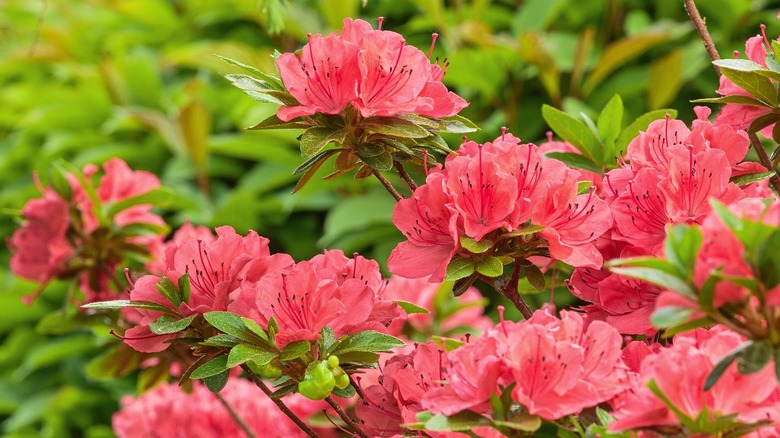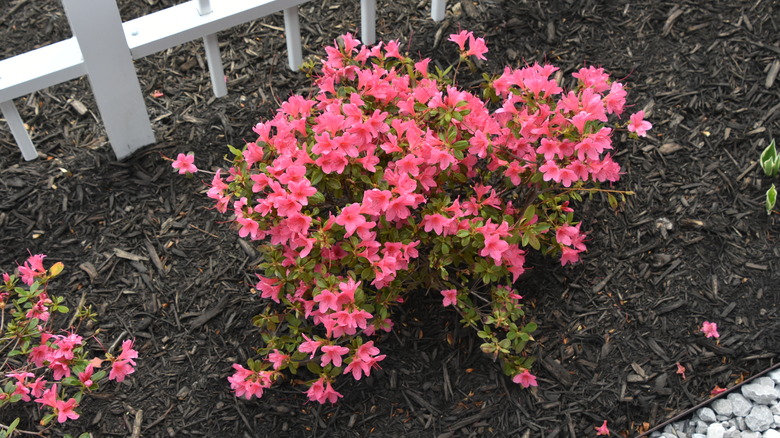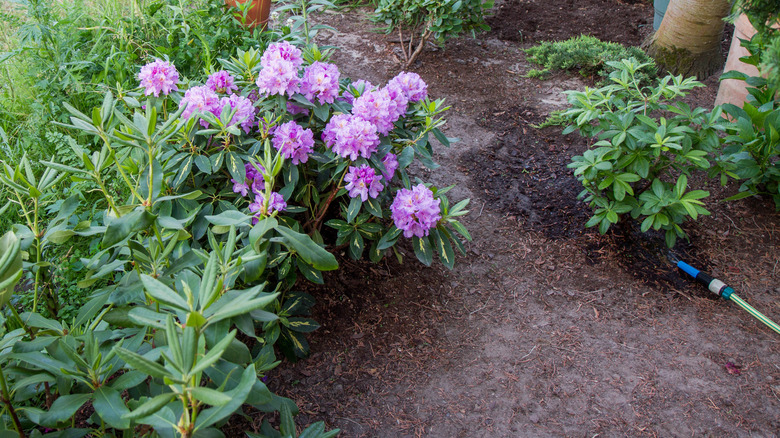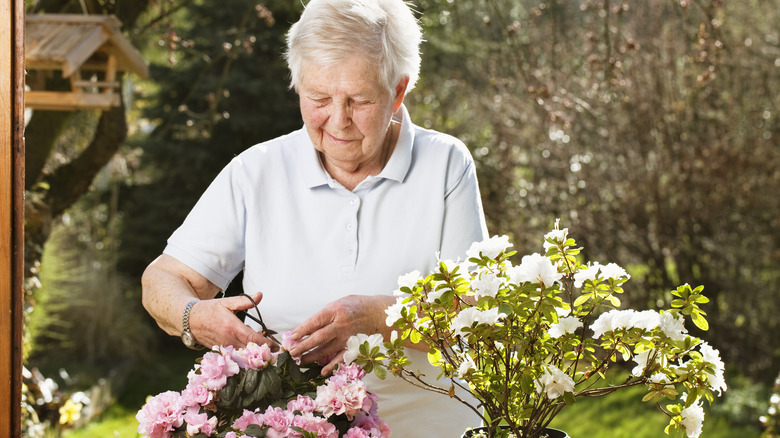Growing Azaleas? Avoid These Crucial Garden Mistakes
Azaleas, which are a part of the Rhododendron family, add a bright pop of color to landscapes. There are dozens of types of azaleas you can grow in your garden, some of which grow much larger and faster than others. With impressive blooms that tend to start in the early spring and run through much of summer (depending on location), azaleas can be an excellent investment in your garden — that is, if you give them the right foundation to make them a success.
Specifically, you'll want to work on reducing some of the most common errors that gardeners make, including buying the wrong plant for your environment, not focusing enough on soil and sun requirements, not pruning them, and not adjusting your watering to meet the plant's needs. Though they aren't necessarily hard to grow, there are a few things you need to know before planting azaleas that can help you improve your garden many times over. If you're hoping to get these beautiful bell-shaped flowers to do well in your yard so you can have cut flowers throughout the year, you'll want to avoid making the following crucial mistakes.
Giving your azaleas the wrong amount of sunlight
The first mistake you may make is not providing the right level of sunlight protection for your plants. The sun is a tricky part of the azalea's lifestyle. Like all plants, it needs sunlight, but the right level of sun is necessary to minimize damage to this somewhat delicate plant.
One of the most important factors with azaleas is giving them partial sunlight, as they don't do their best in direct sunlight, especially with ample heat. Just be sure there's some light, as they don't do well in heavily shaded areas. They may grow, but you won't see the impressive blooms you're after unless you move them into an area with filtered light. They may also be more susceptible to pests and could wither from the heat. If you've just transplanted them into your garden or a container on your porch, make sure to give them some shade to minimize the risk that the plants will dry out. For a fabulous tip to solve this problem, plant them under shade trees, such as under your pine trees. They benefit from the shaded light here and their root system can still penetrate into the soil enough.
At the same time, note that this guidance does not apply to all azaleas. There are some varieties of azaleas that actually do well with the heat and need full sun exposure.
Forgetting to check the soil quality
The next big mistake to avoid when growing azaleas is not giving them soil they can thrive in. In the ideal environment, these plants do best in slightly acidic soil, with a pH of 4.5 to 6.0, with some variance beneficial. Without the right balance of nutrients, the plants will not bloom and may have limited growth overall.
If you haven't done so and your azaleas are struggling, have the soil tested so you can make adjustments to it. You'll also likely notice the problem if you take a closer look at the leaves. If the leaves have any yellowing to them, that's likely because the plant needs improved soil. If your soil test shows the pH is too high, you can lower it by adding ferrous sulfate to it. If the pH is too low, use dolomitic limestone, though low pH is less commonly a concern with azaleas.
If your soil isn't ideal, balance it with organic matter when possible. About half of the soil medium should be some type of organic material like peat moss. You can also use leaves that you've cut up or well-broken-down wood chips. Keep them as natural as possible without any chemical additions for the best results. Also, note that another potential mistake is using aluminum sulfate to fix your soil pH. That could be toxic to the plant.
Overwatering or underwatering your azaleas
Another common mistake with azaleas is not balancing their watering to meet the plant's needs. Again, there are dozens of species with various needs, but overall, you can do a lot of damage to azaleas if you overwater or underwater them. Most azaleas have shallow root systems, which require you to water them at least twice a week, especially during the spring months or during hot periods. You don't want to let them sit in water, though, as that can lead to damage to the roots themselves. You also don't want to water them overhead, as that can cause the petals to brown.
Here's how to fix this. Well-draining soil that gets rain or water every few days is ideal. If the soil is heavy clay or compacted, add organic matter to help loosen it up. If you're just planting your new azalea, try adding loose soil on top of the existing ground soil. The roots will stay closer to the surface but still allow for enough drainage. Placing several inches of organic mulch over the root system will help to prevent them from drying out or becoming too water-logged. Make sure that, if planted in a container, there's ample drainage possible. But remember, you have to keep them moist throughout the growing season.
Not pruning them to encourage growth and health
Finally, don't make the mistake of not pruning your plants. Pruning azaleas can help to encourage growth and health. It also enables them to have good air circulation, minimizing the risk of disease.
One of the first steps is to thin the damaged or leggy branches of the plant, especially those that extend further from the natural canopy or expansiveness of the plant's foliage. This method allows you to control more of the growth and creates a fuller, bloom-heavy plant rather than one that's mostly foliage. It does this because it enables light to get into the inner branches to encourage growth. You can thin out azaleas at just about any time of the year.
If you want more control over the size or structure of the plant, consider heading it. This method allows you to pull back and gain better management over the overgrown portions of the plant, allowing it to focus again on blooms instead of expansion. It's a good idea to cut back most varieties to about a foot from the ground. The best time to do this is during the spring months, as it allows for better blooms by the middle of the summer. Always alter this method based on the species of azaleas you're growing in your garden.




